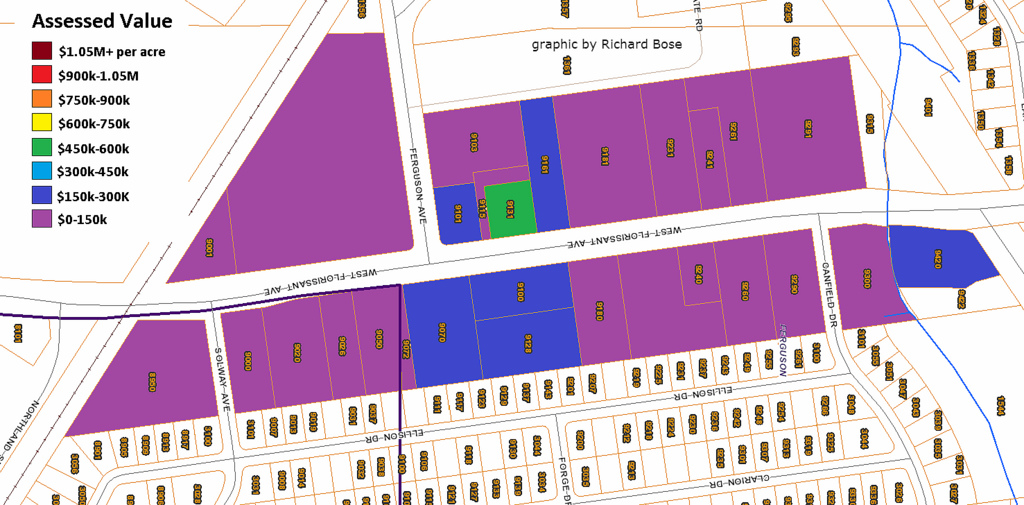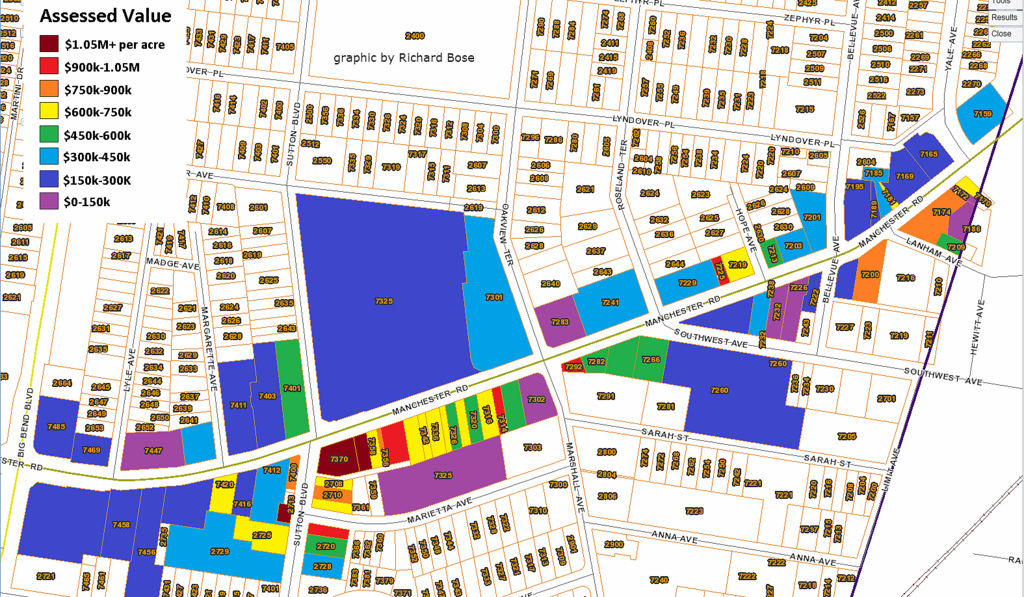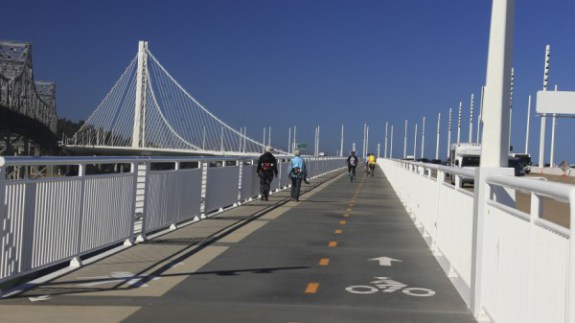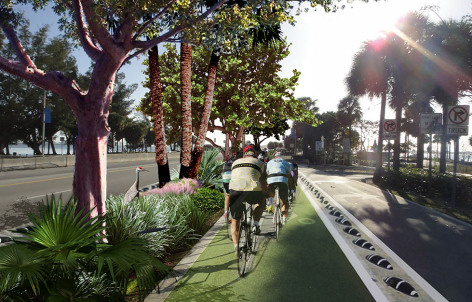Learning from failure
MEMBER NEWS DIGEST - THE LATEST AND GREATEST FROM OUR MEMBER'S BLOGS
Ferguson is having a discussion on rebuilding the West Florrisant corridor. Will a traditional development pattern be undertaken, leading to more productive use of the city's land base, more decent public space (sorely needed during the Ferguson events), and less pressure to use questionable tactics to shore up the budget? Or will the city dig its hole even deeper? Next STL explores.
With such poor performing built environments and much infrastructure to maintain to serve it, it’s no wonder Ferguson must use traffic fines and fees to fill its budget.
We can’t afford to build the way West Florissant is. Zoning and regulations must at least allow, if not encourage, a traditional development pattern. Any government or philanthropic money spent there must be contingent on building a place that is productive enough to last. West Florissant needs to be rebuilt for people, not cars. If it is rebuilt as it was, it will continue to fail, and Ferguson will fail.
Purple is low value per acre. Which of these do you think is the big box sprawl model, and which is the traditional development pattern?
Millennials are apathetic to children, and the folks running our cities have forgotten what it's like to be young, says Family Friendly Cities. This has led to children being the source of NIMBY scorn in some cities:
Sadly those wielding the most influence, say and power in our cities forgot what it was like to be a child. Those that are young and single flocking to cities, in part to suburban boredom, don’t wish to prevent the same thing for future generations. As a result children are seen as NIMBYs, and families are zoned right out of the very communities that could make them stronger and healthier. If we are to make cities that are truly sustainable and benefiting to all then we must stop acting as if making a place for families and their resources is beyond our capabilities and a form of nuisance.
Would you rather ride your bike behind a barrier or next to a car with a white line providing protection? That's the question posed on Walkable West Palm Beach this week, in reference to Florida Department of Transportation (FDOT) bridge designs. While FDOT is getting some worthy praise for having implemented a new standard that allows for narrower travel lanes and requires buffered bike lanes on new projects, little has changed in the process. It's still all about following the manual, experience be damned. FDOT is passing on protected bike paths on bridges because they haven't studied the issue enough and are awaiting FHWA guidance. Meanwhile, people are dying on Florida bridges. When does ignoring a safety measure that is so self-evident rise to the level of professional malpractice?
On the left is a protected bike lane on the San Francisco - Oakland bridge. On the right is Plan Z Miami
Is America's drinking problem really its driving problem? John McCarty of Urban 3 makes the case. Here's a great quote from the article.
‘Gasoline and alcohol don’t mix,’ says the American slogan. Of course they do. Our urban planners mix them all the time and in great doses. See the zoning codes for confirmation.
— Ray Olderburg, The Great Good Place A Simple Comparison
You can check out the entire member blogroll on the Strong Towns member site. If you're a member with a blog and would like your work to show up there, please let us know about it.




